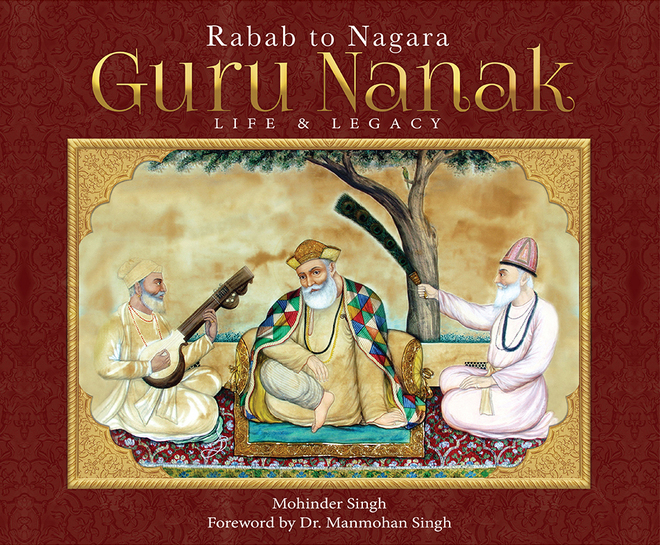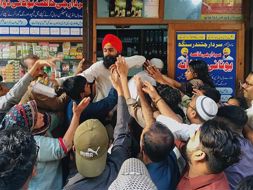Rabab to Nagara: Guru Nanak’s life and Legacy by Mohinder Singh. Himalayan Books. Pages 193.Rs 5,000.
Book Title: Rabab to Nagara: Guru Nanak’s life and Legacy
Author: Mohinder Singh
Roopinder Singh
The 550th birth anniversary of Guru Nanak Dev brought about a much-awaited focus on the founder of Sikhism. With his unique vision, he saw the world as one created by the Creator, and all beings as his creation. His message of unity of mankind has transcended centuries and guided his followers.

There is only one God, said Guru Nanak, although there were many ways to reach Him. By transcending the ‘my way to my God’ is better than ‘your way to your God’ debate and acknowledging that there are other paths to reach Him, Guru Nanak set the stage for interfaith dialogue. He sought out scholars and religious leaders and held discourse with them. Today’s world, wracked by toxic tribalism in various forms, needs the succour that comes from the teachings of the Guru, who declared: “There is no Hindu, no Mussalman, all are creatures of God.”

The year was marked with seminars, books, documentaries, and exhibitions. It was a time to dwell on the teachings of Guru Nanak and to understand his legacy. Governments, institutions and individuals all enthusiastically participated in the year-long celebrations that began in 2018. The celebrations were international, reflecting the presence and strength of the Sikh diaspora.

Bhai Vir Singh Sahitya Sadan, New Delhi, held an early, high-profile event on November 10, 2018. In the presence of former Prime Minister Dr Manmohan Singh and His Holiness the Dalai Lama, Prof BN Goswamy delivered the first lecture in the series, ‘Truth Does Not Grow Old, Ever’. Later, the Dalai Lama inaugurated an impressive exhibition, titled ‘From Rabab to Nagara: Life and Legacy of Guru Nanak’. It was mounted by the National Institute of Panjab Studies, a unit of Bhai Vir Singh Sahitya Sadan, New Delhi, and was a labour of love of Dr Mohinder Singh, director of the Sadan. ‘From Rabab to Nagara’ explores various expressions of the Guru’s teachings and their implementation.

A series of lectures continued at the Bhavan, even as the exhibition travelled to various cities in India, where it was well received. Now it has been presented in the form of a coffee-table book, with the foreword by Dr Manmohan Singh. The lavishly mounted volume has quite a large collection of pictures that span time and styles of visual representation, representing the world of the Guru envisioned by artists over centuries.

We have paintings, murals, photographs of gurdwaras, along with descriptive passages about their significance. The Janamsakhis, or hagiographic accounts of the life and teachings of Guru Nanak, provided the basis for Pahari miniatures that were drawn by talented artists. The same holds true for more recent artists like Sobha Singh, Kirpal Singh and Devinder Singh. The book has their paintings too. Contemporary works of Arpana Caur, The Singh Twins — Amrit and Rabindra, Sidharth, Bhagat Singh, Kanwar Dhillon, Swaranjit Savi and Sharandeep Singh are also represented.
Photographs form a significant part and the works of William Baker, Lala Deen Dayal, Lance Dane, Deidi von Schaewen, Raghu Rai, Ashok Dilwali, Sondeep Shankar and Malkiat Singh have been featured.
What makes this compendium particularly useful is the sheer breadth of work that has been collected in one place, and the expansion of the canvas from Guru Nanak to include his successors. A section on photographs that shows how the Sikhs celebrate their Guru’s legacy in various parts of the world gives vignettes of the diaspora and its expression of devotion.
By turning the exhibition into a book, and inserting the text that gives it context and provides valuable information about the Gurus and the Sikhs, the Sadan has created a memorable volume. The colourful compendium is bound to find a place of pride in many libraries. It should.














